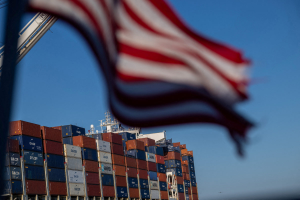It’s been evident for a long time that President Donald Trump is quite fond of the idea of dispatching the US military on domestic soil. It’s one of the outcomes that those who are wary of Trump’s more authoritarian tendencies fear most, because of the Pandora’s box it could open.

It appears he’s getting closer and closer to making that longstanding aspiration a reality.
Trump has floated this idea repeatedly over the years and has taken some bona fide steps toward it in his second term. That includes increasingly militarizing the border. And two months ago, he took a limited but significant step of sending not just the National Guard but also active-duty troops – Marines – to Los Angeles to guard federal buildings amid protests. It was the first time in 60 years that a president had done such a thing without a request from a governor.
Given the violence in Los Angeles wasn’t nearly as rampant or widespread as Trump advertised it, that raised the prospect that he was testing boundaries. His move to call in the troops, for example, is the subject of ongoing litigation that heads to trial next week. More broadly, it also tested Americans’ tolerance for the military on US streets.
Top officials in Trump’s first administration seemed to successfully dissuade the president from such drastic steps. But those people are apparently gone. And there are increasing signs that Trump aims to press forward.
Twice in just the last two days, he has proposed using the military for domestic law enforcement – even in the absence of a significant, imminent threat of something like riots.
On Tuesday, Trump asserted more control of the upcoming 2028 Olympic Games in Los Angeles than presidents usually have. And he quickly floated using the military to protect the Games, while name checking two of his favorite Democratic targets – California Gov. Gavin Newsom and Los Angeles Mayor Karen Bass.
“We’ll do anything necessary to keep the Olympics safe, including using our National Guard or military, OK?” Trump said. “I will use the National Guard or the military – this is going to be so safe – if we have to.”
By Wednesday, Trump expanded his recently pushed idea to federalize law enforcement in Washington, DC, to include using the National Guard in a more active role. CNN reports the administration is making plans to increase the presence of federal law enforcement, including Guard troops.
“And what a shame. The rate of crime, the rate of muggings, killings and everything else,” Trump told reporters in the Oval Office. “We’re not going to let it – and that includes bringing in the National Guard maybe very quickly too.”
What’s particularly striking about these comments and moves is the lack of an imminent threat.
Similar to Trump’s proposal to use the military for an Olympics that is three years in the future, there is little evidence of extraordinary circumstances in DC that might historically lead to suggestions of such a response. Crime in the nation’s capital is actually falling for the second straight year in the district. But Trump is floating this anyway.
In addition, while Trump has floated the idea of federalizing law enforcement in DC before – he did so often in 2023 and early 2024, when he was out of office – the National Guard aspect is new.
It’s not just his rhetoric, either.
The administration last week took yet another step toward using the Guard for deportation operations, authorizing their deployments to immigration facilities.
The move didn’t yet authorize the Guard to participate in immigration raids, but it was yet another escalation in Trump’s efforts to use the military in domestic law enforcement.
It remains to be seen just how far he goes in using the military on US soil. Trump often floats ideas that don’t come to fruition. There are also legal hurdles, with the most drastic steps legally requiring him to invoke the Insurrection Act.
But he planted this seed years ago and has conspicuously upped the fertilizer of late.
In 2020, there were many reports of Trump’s often-privately expressed desired to use the military, particularly to crack down on racial-justice protests that sometimes turned violent. Former Defense Secretary Mark Esper has said Trump floated using 10,000 active-duty troops in DC, and that top White House adviser Stephen Miller floated sending as many as 250,000 troops to the US-Mexico border.
By 2023, Trump signaled that he would break with historical practice – and possibly the law – by not deferring to governors and local officials on calling in the military to deal with unrest. “The next time, I’m not waiting,” Trump said. (He followed through on that threat in Los Angeles this year. A trial next week will determine whether he broke the law in doing so.)
Back then Trump also signaled he would use the military for his mass deportation operation.
By late in the 2024 campaign, he began building up the supposed menace of the “enemy within” – supposedly nefarious forces inside the US – that he said “should be very easily handled by, if necessary, by National Guard, or if really necessary, by the military.”
And by the time Trump made the call on sending the Guard and Marines to Los Angeles, he began asserting that this might be the start of a very different new normal.
“We’re going to have troops everywhere,” he said.
It might be time to start taking that prospect more seriously.
Reposted from CNN

